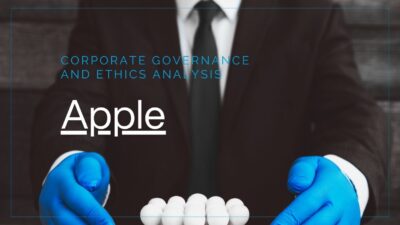Table contents
Introduction
- 1.1. Definition of strategic change
- 1.2. Role of strategic management
Problem Identification
- 2.1. Strategic Awareness
- 2.2. Leadership Challenges
- 2.3. Cultural and Structural Barriers
- 2.4. Employee Engagement and Resistance
Critical Discussion
- 3.1. Change Management Models
- 3.2. Communication Strategies
- 3.3. Organisational Learning
Recommendations and Conclusion
- 4.1. Summary of key challenges and strategies
- 4.2. Importance of leadership, culture, and employee engagement
- 4.3. Future outlook on strategic change management
References
Introduction
Like the environment, which is in a constant flux of change, business organisations remain in a fluctuating dynamic interplay between internal and external factors. Whether due to deliberate shifts in an organisation’s fundamental direction, objectives, processes, or structure aimed to enhance its competitive position, responding to market dynamics, exploiting new opportunities, or addressing emerging challenges, strategic awareness becomes a vital component for organisational strategic change success.
Thus, strategic change is defined as the process of enhancing organisational effectiveness by aligning its components, its mission and strategy, its structure, and its human resources. A theory that is associated with strategic change management is the TPC Theory that spotlights an organisation’s strategic management as being encompassed across three technical, political, and cultural systems, emphasising the significance of alignment among these systems (Tichy, 1982).
A key aspect of strategic change is strategic management. This is defined as a series of procedures that organisations employ to define their mission, goals, and envisioned accomplishments. According to Thompson, Martin, and Scott, (2023), these procedures entail devising strategies to attain these goals within set timeframes, even amidst evolving circumstances, and subsequently executing these strategies. Furthermore, strategic management entails assessing progress and results, and being adaptable enough to modify or adapt as required.
Strategic change in business management refers to deliberate shifts in an organization’s fundamental direction, objectives, processes, or structure aimed at enhancing its competitive position, responding to market dynamics, exploiting new opportunities, or addressing emerging challenges. Failure to effectively manage strategic change can result in decreased business competitiveness, loss of profits, and organisational decline or failure.
This essay is aims to address the multifaceted challenges inherent to managing strategic change in business. Due to assignment word limit constraints, this essay will delve into the following sections: problem identification, critical discussion, following by a conclusion.
Problem Identification
In contemporary business environments, managing strategic change is critical for organisations wishing to adapt, remain relevant, and flourish during uncertain market conditions and technological advancements. This section examines the multifaceted challenges involved in identifying and addressing some of the key issues related to strategic change within organisations including, strategic awareness, leadership challenges, cultural and structural barriers, employee engagement and resistance.
For business to identify the need for change, managers must first develop a strategic awareness of the environments in which they operate. Business environments are complex ecosystems characterised by evolving environmental changes, technological disruptions, and dynamic market (Rodrigues and Franco, 2019). To effectively manage strategic change, it is imperative to have strategic awareness. This requires a comprehensive understanding external and internal forces, and their subsequent implications for organisational sustainability and competitiveness (Thompson, Martin and Scott, 2023).
There a numbers of analytical tools businesses can utilise to acquire strategic awareness. Tools such as SWOT and PESTLE can facilitate strategic awareness by providing businesses with enhanced awareness of the business landscape. For instance, SWOT identifies problems categorised as strengths, weaknesses, opportunities, and threat, whereas PESTLE identifies categorises problems as political, economic, social, technological, legal, and environmental (Rengarajan et al., 2016). According to Thompson, Martin and Scott, (2023), the importance of employing these analytical procedures is to provides organisations and managers lenses through which they make sense of the business world and adjust accordingly to the changing environment and mitigate for potential failures whilst maintaining a competitive edge.
Strategic leadership plays a critical role in directing the complexities associated with managing strategic change. It is defined as an individual’s capacity to anticipate, envision, exhibit flexibility, engage in strategic thinking, and be able to collaborate with others to initiate changes that will facilitate a sustainable future for the organisation (Ireland and Hitt, 1999). Furthermore, leaders must assume responsibility for articulating a compelling vision for change (Baker, 2007). Whether this is achieved by communicating their rationale, mobilising organisational stakeholders toward shared objectives, visionary leadership, especially during times of predictability, is vital for managing strategic change as this aids in fostering a sense of direction and purpose, whilst instilling confidence and commitment among employees to embrace change initiatives (Schein, 2004). Moreover, effective communication strategies are essential for facilitating transparency, fostering trust, and mitigating resistance to change (Galvin, Waldman and Balthazard, 2010). This can be achieved by leaders leveraging various communication channels to disseminate information, seeking constructive feedback, and engaging with employees in dialogue regarding the rationale and implications of proposed changes (Haque, TitiAmayah and Liu, 2016).
Organisational culture and structural mechanisms have a significant impact on the acceptance rate and adoption of strategic change initiatives (Choromides, 2018). Cultural norms, values, and beliefs shape individual attitudes toward change, influence their receptivity towards chance, and determine the extent of their engagement in change processes. For these reasons, during change initiatives, management must assess intitial cultural dynamics within their organisations and strive to cultivate a culture that creates opportunities for innovation, agility, and adaptability (Latta, 2015). For instance, structural barriers, such as hierarchical structures and bureaucratic processes, can impede the agility and responsiveness of organisations to change (Thompson, Martin and Scott, 2023).
In the same vein, rigidity in organisational structures may inhibit collaboration, hinder communication, and restrict creativity, thereby undermining the effectiveness of change initiatives. Baker (2007), suggests that it is not possible to use the traditional hierarchy within the organisation to force change, emphasising the need for managers to adopt a systemic perspective and implement structural reforms that promote flexibility, decentralised consolidation of hierarchical authority, and empowerment.
Employee engagement is a critical determinant of the success of strategic change initiatives (Bakari, Hunjra and Niazi, 2017). It is important to consider, understand, and recognise the diverse perspectives and concerns of employees are essential considerations to account for when fostering a sense of ownership and commitment to change. According to Wanberg and Banas (2000), change induces stress, and individuals with elevated levels of self-esteem, optimism, and perceived control are more likely to be receptive to change. They also claimed that individuals displaying these attributes are more likely to perceive change in a positive light than those displaying contrasting attributes. By recognising these nuanced differences, managers can cultivate a supportive and inclusive organisational climate that encourages participation, innovation, and continuous learning (Wanberg and Banas, 2000).
Addressing resistance requires proactive strategies aimed at building trust, managing expectations, and assessing the root causes of resistance. For instance, investigating the cause of resistance requires understanding of a person’s beliefs and value systems. Since these nuanced attributes are often unseen, discovering them can be facilitated by observing what people do and engaging with them in dialogue to understand their perspective on a particular matter. Then, by asking the question, “what fact, belief, or value is being reflected by what this person is doing?” you can establish an informed understanding a person’s belief and value system (Hultman, 2003). Furthermore, engaging with employees in the change process empowers them to contribute insights and feel acknowledges, identify potential obstacles, and enables them to become change agents of organisational goals and values (Errida and Lotfi, 2021).
Critical Discussion
For businesses to navigate the complexities of strategic change, various models, strategies, and practices must be adopted to ensure successful adaptation and transformation. This critical discussion section aims to explores some of the key dimensions of managing strategic change, including change management models, communication strategies, and organisational learning.
Change management models serve as conceptual frameworks that guide organisations through the process of initiating, implementing, and sustaining strategic change initiatives. Galli (2018) emphasises that, owing to diverse external and internal factors inherent to organisational environments, specific change management models do not uniformly manifest themselves. Consequently, management must tailor change models and methodologies depending upon the circumstances.
To date, there exits several popular change management models, such as Kurt Lewin’s 3 Step Change Theory Model and Kotter’s 8 Step Change Model, which differ in their emphasis and procedural executions of change management (Al-Haddad and Kotnour, 2015). For instance, Kotter’s 8-Step Model underscores the importance of establishing a sense of urgency, creating a guiding coalition, developing a vision and strategy, and communicating the vision for change (Appelbaum et al., 2012). Through integrating these steps into the change management procedures, in unison with training to foster competence and commitment, meeting reward expectations, facilitating the wider distribution of new ideas, and implementing monitoring and control processes, it is supposed that collectively these measures would encourage change in the corporate culture of a company (Appelbaum et al., 2012).
In contrast, Lewin’s 3 Steps Change Theory advocates for unfreezing of existing behaviours, implementing change, and refreezing new behaviours to ensure sustainability (Lewin, 1951). According to Galli (2018), Lewin’s theory suggests that organisations must first allocate time for reflecting on the change and organisational involvement analysis before initiating the “unfreezing” process. This requires recognising the initial need for organisational change, yet a thorough analysis must be conducted to discern which aspects are effective and which are not. The fundamental premise of Lewin’s theory revolves around the unfreezing of existing behaviours, altering attitudes and behaviours, and then refreezing the new behaviour to become accepted as common practice (Thompson, Martin and Scott, 2023).
In addition to the aforementioned change management models there are several undiscussed change management models that can be considered, including Judson’s Method (1991), Jick & Kanter Method, Lueke’s Method (2003), and Hamel’s Insurrection Method (2000) (Al-Haddad and Kotnour, 2015). While these change models vary in their approach, it is crucial to acknowledge that successful implementation of strategic change initiatives, irrespective of their models, can significantly influence a business’s short-term and long-term success (Appelbaum et al., 2012).
Effective communication serves as a cornerstone of successful change management. Coherent communication enables leaders to strategically articulate the rationale for change, address concerns, and elicit actionable feedback from both internal employees and external stakeholders. The ability to delivery messages using clear and consistent communication fosters transparency to invested stakeholders and employees, builds trust, and minimises uncertainty throughout the change process (Errida and Lotfi, 2021).
Various strategies which can be employed the aid the strategic change process. For example, a well-crafted mission statement not only servers as reference point to reflect an organisations values and objectives, it also a sound statement that encourages forced thinking (Thompson, Martin and Scott, 2023). As Thompson, Martin and Scott (2023) note, a good mission statement encompasses five key traits: (i) sets measurable objectives, (ii) distinguishes the company from competitors, (iii) defines the desired business scope, (iv) pertains to all stakeholders, not just shareholders and managers, and (v) is exciting and inspiring. The presence of these traits within a mission can serve additional purposes. During periods of strategic changes, not only do these traits provide utility for objectively aligning strategic change initiatives with organisational goals, but they also aid in ensuring coherence, synergy, and focus across all levels of the organisation.
Similar to effective communication, organisational learning plays a pivotal role in strategic change management. Fostering a culture of continuous learning and adaptation is essential for enabling organisations to successfully thrive during dynamic times of change. For instance, facilitating learning aids in resolving social conflicts as it enables individuals to comprehend and reorganize their perceptions of the surrounding environment (Burnes, 2004). It also enables individuals to extract valuable insights from past change initiatives, identify best practices, and harness the knowledge gained from previous experiences to inform future strategies. Moreover, the continued promotion of organisational learning and identifying of best practices enhances an organisation’s propensity to be crisis averse. Organisations must find ways of empowering their employees, harnessing their commitment and promoting organisational learning to enable employees to make a positive contribution to strategic change management Thompson, Martin and Scott (2023).
Conclusion
In conclusion, strategic change management in contemporary business environments demands comprehensive approaches that address multifaceted challenges. Strategic awareness, enhanced using tools like SWOT and PESTLE analysis, underpins the identification of changes needed for organisations to adapt to fluctuating internal and external environmental factors.
Leadership, characterised by visionary direction and effective communication, plays a pivotal role in driving strategic change. The cultivating of a supportive culture and implementing structural reforms are essential for overcoming cultural and structural barriers to change. Moreover, employee engagement emerges as a critical determinant of change success, requiring proactive strategies to build trust and empower employees as change agents affiliated with organisational goals.
Additionally, change management models, communication strategies, and organizational learning practices offer valuable frameworks for navigating strategic change. From Kotter’s 8-Step Model to Lewin’s 3-Step Change Theory, organisations can draw upon diverse methodologies and frameworks to guide their change efforts and foster continuous learning and adaptation of organisational change.
In conclusion, managing strategic change demands a nuanced understanding of organisational dynamics, effective leadership, and invested stakeholder engagement. By integrating these critical dimensions into their change management strategies, organisations can enhance their resilience to business stagnation, organisation agility, and capacity to succeed during transformative business environments. As organisations continue to evolve and adapt, strategic change management remains essential for driving innovation, fostering growth, and ensuring long-term success in evolving business climates.
[Word Count – 2139]
References
Al-Haddad, S. and Kotnour, T. (2015) ‘Integrating the organizational change literature: a model for successful change’, Journal of Organizational Change Management, 28(2), pp. 234–262. doi:10.1108/JOCM-11-2013-0215
Appelbaum, S.H. et al. (2012) ‘Back to the future: revisiting Kotter’s 1996 change model’, Journal of Management Development, 31(8), pp. 764–782.
doi:10.1108/02621711211253231
Bakari, H., Hunjra, A.I. and Niazi, G.S.K. (2017) ‘How Does Authentic Leadership Influence Planned Organizational Change? The Role of Employees’ Perceptions: Integration of Theory of Planned Behavior and Lewin’s Three Step Model’, Journal of Change Management, 17(2), pp. 155–187. doi:10.1080/14697017.2017.1299370
Baker, D. (2007) Strategic Change Management in Public Sector Organisations. Elsevier Science.
Burnes, B. (2004) ‘Kurt Lewin and the Planned Approach to Change: A Re-appraisal’, Journal of Management Studies, 41(6), pp. 977–1002. doi:10.1111/j.1467-6486.2004.00463.x
Choromides, C. (2018) ‘Leadership and Change Management: A Cross-Cultural Perspective’, International Journal of Entrepreneurial Behavior & Research, 24(2), pp. 575–578.
doi:10.1108/IJEBR-03-2018-428
Errida, A. and Lotfi, B. (2021) ‘The determinants of organizational change management success: Literature review and case study’, International Journal of Engineering Business Management, 13, p. 184797902110162. doi:10.1177/18479790211016273
Galli, B.J. (2018) ‘Change Management Models: A Comparative Analysis and Concerns’, IEEE Engineering Management Review, 46(3), pp. 124–132.
doi:10.1109/EMR.2018.2866860
Galvin, B.M., Waldman, D.A. and Balthazard, P. (2010) ‘Visionary Communication Qualities as Mediators of The Relationship Between Narcissism and Attributions of Leader Charisma’. Personal Psychology,63(3), pp. 509-537. doi:10.1111/j.1744-6570.2010.01179.x
Haque, M.D., TitiAmayah, A. and Liu, L. (2016) ‘The role of vision in organizational readiness for change and growth’, Leadership & organization development journal, 37(7), pp. 983–999. doi:10.1108/LODJ-01-2015-0003
Hultman, K. (2003) ‘Resistance to Change, Managing’, Encyclopedia of Information Systems, 3, pp. 693–705. doi:10.1016/B0-12-227240-4/00149-0
Ireland, R. and Hitt, M. (1999) ‘Achieving and maintaining strategic competitiveness in the 21 st century: The role of trategic leadership’, Academy of Management Perspectives, 13. doi:10.5465/AME.1999.1567311
Latta, G. (2015) ‘Modeling the cultural dynamics of resistance and facilitation’, Journal of Organizational Change Management, 28, pp. 1013–1037.
doi:10.1108/JOCM-07-2013-0123
Lewin, K. (1951) Field theory in social science: selected theoretical papers (Edited by Dorwin Cartwright.)., Field theory in social science: selected theoretical papers (Edited by Dorwin Cartwright.). Oxford, England: Harpers.
Rengarajan, S. et al. (2016) ‘A Political, Economic, Social, Technological, Legal and Environmental (PESTLE) approach for assessment of coastal zone management practice in India’, International Review of Public Administration, 21, pp. 216–232.
doi:10.1080/12294659.2016.1237091
Rodrigues, M. and Franco, M. (2019) ‘The Corporate Sustainability Strategy in Organisations: A Systematic Review and Future Directions’, Sustainability, 11(22).
doi:10.3390/su11226214
Schein, E.H. (2004) Organizational Culture and Leadership, Third Edition. Jossey-Bass (BusinessPro collection).
Thompson, J.L., Martin, F. and Scott, J.M. (2023) Strategic Management Awareness and Change. Cengage Learning.
Tichy, N.M. (1982) ‘Managing change strategically: The technical, political, and cultural keys’, Organizational Dynamics, 11(2), pp. 59–80. doi:10.1016/0090-2616(82)90005-5
Wanberg, C.R. and Banas, J.T. (2000) ‘Predictors and outcomes of openness to changes in a reorganizing workplace’, The Journal of applied psychology, 85(1), pp. 132–142. doi:10.1037/0021-9010.85.1.132




